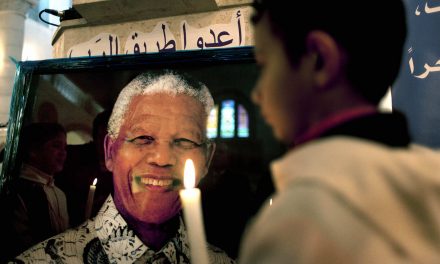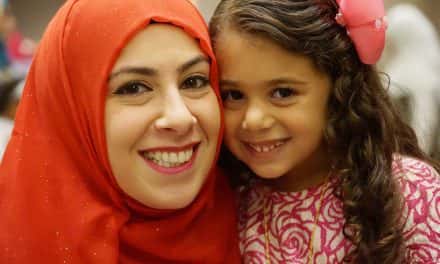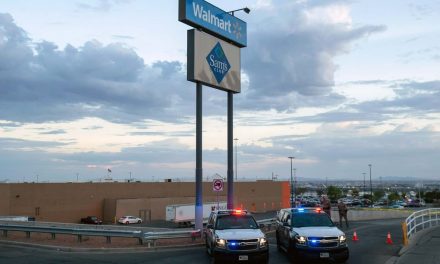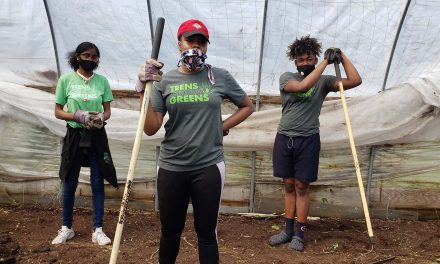
The year 2020, a year where we faced a deadly pandemic, saw the city reach a grim record surpassing 1991 as the deadliest year in the city’s history with a record 193 homicides. It was devastating to lose so many Milwaukeeans to murder.
Six children under the age of ten were murder victims in 2020. Fourteen-month-old Alonzo M. Lamar was beaten to death by the boyfriend of his mother while she was at work on January 1, 2020. According to the Milwaukee Police Department “the baby’s body had substantial bruising to the head and face and human bite marks on the left arm, back and leg.” It was a really horrible way to begin the year and devastated the family.
Just a little over a month later, two sisters, Zaniya Ivery, Camaria Banks, along with their mother Amarah Banks were brutally murdered by Zaniya’s father.
On June 12 De’Andre Allen, just four months old, became the fifth child under age of ten to be murdered in Milwaukee. No suspect has been found by the Milwaukee Police Department according to the Milwaukee Journal Sentinel Homicide Tracker.
Two-year-old Zymeiia Stevens was shot and killed on July 21 by an unknown assailant.
These tragic losses of the lives of very young children underscores the level of pain and trauma associated with homicide deaths. No one can truly fathom the loss of a young child in these circumstances. Domestic violence played a major role in these child homicides. At least three of these victims died in domestic violence related incidents.
Domestic violence became a major factor in murders in the city like some projected as the pandemic forced more people to stay at home. Five of the six children under age ten who were murdered were the victims of abuse according to the Milwaukee Journal Sentinel Homicide Tracker.
One of the sad things for me as I went through the entire 193 murders was it was clear that many victims have a perpetrator who is still walking the streets because charges have not been filed in the cases. In 129 of the 193 murders, no charges have been filed. That means that sixty-seven percent of the murders that occurred last year in Milwaukee are unresolved.
Of the 142 black victims, charges have been filed in just 95 cases. Sixty-nine percent of Hispanic victims cases have had no charges filed. Seventy-six percent of white murder victims have seen no charges filed.
Overall, seventy-nine percent of the all homicide victims were male, twenty-one percent female. Eighty-eight percent were shot to death. Seventy-four percent were black. Sixty-seven percent were 18-39 years olds.
Gun violence continues to be the main issue with murders in the city. The percentage of murder victims shot to death is: 92% of black victims; 81% of Hispanic victims; and 76% of white victims. When nearly nine out of every ten victims is shot to death it is clear to see that gun violence is a major issue. Looking back on the percentage of murders related to gun violence since 2014 shows us the enormity of the problem: 2020 (88%); 2019 (79%); 2018 (86%); 2017 (85%); 2016 (82%); 2015 (81%); 2014 (88%).
From 2014-2019 there were 886 people murdered in Milwaukee and 746 were shot to death. Untold numbers of shooting victims were saved by tremendous trauma teams at local hospitals.
There are some trends in this data that are not part of the usual narrative about murders in Milwaukee. We saw a huge spike in murders from 2019-2020. In 2019 just 98 murders occurred in the city but that ballooned to 193 in 2020. We have seen a similar spike before. In 2014 there were just 88 murders in Milwaukee but the following year 146 people were murdered.
After reaching that highpoint, murders decreased by 32.8% through 2019. In fact murders dropped each year from 2015-2019: 2015 (146); 2014 (141); 2017 (119); 2018 (101); 2019 (98). Now some of this is related to people who were shot being saved in hospitals but it shows a downward trend that is significant over that time period.
Did people feel safer due to this drop? Probably not, because the 32.8% drop was not widely spoken about among community leaders, elected officials, the police or the local media. However, the spike in 2020 received constant attention by all of the aforementioned parties.
Our perception of safety is often not driven by the reality of crime, particularly violent crime. When we tend to think of crime we think of murders above and beyond all other such victimizations for obvious reasons. Murders are the stories that generally make the local news. We hear about them and assume that they are a nearly daily occurrence even though they are not. “If it bleeds it leads” is an old saying in the news business.
Last year in Milwaukee we had a number of multiple victim homicides. The murder of Amarah Banks and her children was one instance of this. The mass shooting at Molson Coors on February 26 where five people were killed by a co-worker, was another case of multiple victim homicide. On April 27, five family members were killed in a multiple victim homicide. These types of crimes were aberrations but nevertheless just as devastating to the community overall.
Most murder victims in Milwaukee are black males. Of the 886 murders from 2014-2020, 696 victims were black males (78.6%). Of these eighty-three percent were shot to death. From 2014-2020 an average of 82 black males were shot and killed in Milwaukee each year. Subtracting the spike in 2020, shows that an average of 78 black males were victims of gun homicides per year from 2014-2019.
This is a major issue in the city. There has been a tremendous amount of discussion of this problem by members of the Black community. Lots of people have chimed in about the root causes and they have also offered suggestions about fixing the problem.
Reggie Moore is the director of the City’s Office of Violence Prevention. He has testified in Congress about this issue and his team developed a Blueprint for Peace.
“The Milwaukee Blueprint for Peace is a community-driven agenda for addressing the complex factors that drive violence in our city. Rooted in a public health approach to violence prevention, this Blueprint was shaped by more than 1,500 individuals, elevating the voices of youth, community residents, and key stakeholders to call for strategic, aligned, and sustained investments and action to prevent violence, build resilience, and create a safer, healthier city.”
The Blueprint zeroes in on 10 neighborhoods and six specific goals. Moore told journalist Mike Gousha in February 2019 that “I think there’s been progress, but we have a long way to go.”
The six goals are as follows: Goal 1, Stop the shooting. Stop the violence; Goal 2, Promote healing and and restorative justice; Goal 3, Support children, youth and families; Goal 4, Promote economic opportunity; Goal 5, Foster safe and strong neighborhoods; Goal 6, Strengthen capacity and coordination of violence prevention efforts. Each goal is aligned with a specific set of strategies developed by looking at root causes in Milwaukee. They noted a 76% increase in firearm-related homicides from 2010 to 2016 in Milwaukee as one of the reason to create a plan to confront this challenge in a more deliberate way. I highly recommend anyone who is interested in this plan to read it for themselves.
“The Blueprint for Peace is the first of its kind in Milwaukee dedicated to the prevention of multiple forms of violence. It establishes clear direction and a call to action for a public health approach to violence prevention that engages community residents and multiple sectors.”
The Blueprint for Peace is just one part of a multifaceted approach to dealing with the many ills in the city of Milwaukee. Decades of high quality jobs losses, and disinvestment has created a chasm in Milwaukee between the experiences of the Latinx and Black communities versus the experience of Whites in the city.
As bad as the murder numbers are, we must keep in mind that there are 224,284 Blacks living in Milwaukee and just 142 were murdered last year (.06% of Black population). The previous year, before the pandemic hit, just 71 Blacks were murdered in the city, the lowest number seen since just 67 were murdered in 2014. Only 54 Blacks were the killed by gunshots in 2019 as compared to 107 back in 2015.
Progress has been made in crime overall in the city. The number of crimes reported to the Milwaukee Police Department according to the FBI Uniform Crime Reports, dropped from 48,040 in 2007 to just 26,311 in 2018 (a 45.2% drop). Part of the drop can be associated with a lack of faith in the department by some in the Black and Latinx communities, but most is because crime has gotten be be much less of a problem.
It’s probably hard for some to see things this way. I get it. However, the optimist in me says let’s take the good news when we can get some. Obviously the pandemic and its short and long term impacts are hard to reconcile. A significant increase in domestic violence was obviously related to pandemic protocols. We are still not out of the woods as the pandemic is still killing people around the country despite the vaccinations increasing in recent weeks.
I want people to understand that the trauma caused by murders, particularly firearm related murders, not to mention firearm related suicides, needs more attention paid to it.
We can’t give up hope and assume that this problem in the Black community is a part of our culture. Instead we must understand that it is a part of our circumstances.
Systemic racism plays a role in the outcomes of our lives in a way that most never think about. The economic conditions in Milwaukee since we absorbed the loss of over 92,000 high quality, family supporting wage jobs since 1963 is a major factor in the lived experiences of Milwaukee’s Black community. Those are the jobs that brought us here in large numbers from the 1940s though the early 1980s.
We did not suddenly decide we wanted unsafe neighborhoods full of guns. We don’t manufacture the guns or transport them into our own community. We are not the ones producing decades of movies, television shows, and music videos portraying young Black males as nothing other than thugs.
Perception becomes reality for impressionable minds. As long as young Black males in Milwaukee continue to see images and videos of them not valuing each others lives how can we expect them to change? Most young Black males in Milwaukee are doing just fine though. They are not involved in criminal activity and certainly are not just going around shooting at random people. There is a very, very, small segment of the community that commits most of the violent crime we see.
These young boys and men have been Milwaukee’s throw away generation. Our schools have failed them, our elected leaders have failed them, our social safety net programs have failed them, our non-profit community has failed them and our community overall continues to fail them.
We can do better. We must do better. I hope that we will be serious enough to do better. Our city, our community, our families, and our children all deserve better.
“Those who fail to plan, plan to fail.” – Malcolm X














